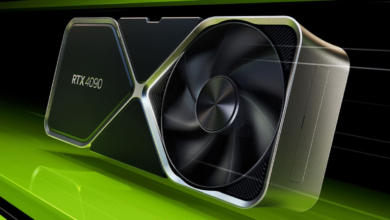
In today’s digital world, color accuracy is crucial for photographers, graphic designers, video editors, and even everyday users who want the best visual experience. A poorly calibrated monitor can lead to inaccurate colors, affecting your work and media consumption. Monitor calibration ensures that your display reproduces colors as intended, providing consistency across different devices. Whether you’re editing photos, designing graphics, or simply watching movies, a properly calibrated monitor makes a significant difference. Whether you rely on your display for creative work or entertainment, calibration is a necessary step for an optimal viewing experience.
This guide will walk you through the steps to calibrate your monitor for optimal color accuracy, covering both software and hardware methods. You’ll learn why calibration matters, the tools you need, and how to fine-tune your display settings. By the end, you’ll have a monitor that delivers true-to-life colors, enhancing both productivity and entertainment. By adjusting these parameters, you not only improve visual quality but also reduce fatigue during long work sessions.
How to Calibrate Your Monitor for Better Color Accuracy
Why Monitor Calibration Matters
A monitor’s default settings often don’t provide the best color accuracy. Factory presets may be too bright, overly saturated, or have incorrect color temperature, leading to inconsistencies. For professionals, this can mean the difference between a perfect print and a disappointing result. Even casual users benefit from calibration, as it ensures movies, games, and photos look their best. Uncalibrated monitors can also cause eye strain due to excessive brightness or improper gamma settings.
Understanding Key Calibration Terms
Before calibrating your monitor, it’s important to grasp essential terms that affect color accuracy. Color gamut refers to the range of Color Accuracy a display can reproduce, with standards like sRGB and Adobe RGB offering different vibrancy levels. Brightness and contrast impact visibility, ensuring details are clear without overexposure or loss of shadow depth. Finally, gamma (typically set to 2.2) controls mid-tone brightness, influencing how smoothly images transition from dark to light areas.
Methods to Calibrate Your Monitor
There are two primary ways to achieve accurate color calibration: using software-based tools or a dedicated hardware calibrator. Built-in options like Windows Display Calibration or macOS Display Calibrator Assistant provide basic adjustments for brightness, contrast, and gamma. For professional-grade precision, hardware calibrators like the X-Rite i1Display Pro or Datacolor SpyderX measure colors directly from your screen and generate custom ICC profiles.
Using Built-in Software Tools
Most operating systems offer basic calibration tools: Windows: The Display Color Calibration wizard guides you through adjusting gamma, brightness, contrast, and Color Accuracy balance. macOS: The Display Calibrator Assistant helps fine-tune white point and gamma. While these tools are better than nothing, they rely on your eyesight, which can be subjective. Software-only methods rely on visual perception, making them less consistent.
Using a Hardware Calibrator
Devices like the X-Rite i1Display Pro or Datacolor SpyderX provide professional-grade calibration. These tools measure colors directly from your screen and create an ICC profile, ensuring Color Accuracy. Simply connect the device, follow the software instructions, and let it analyze your display. The result is a perfectly balanced monitor with consistent Color Accuracy. For more precise results, a hardware calibrator is recommended.
Reset Your Monitor to Default Settings
To reset your monitor to default settings, first locate the menu button on your monitor, usually found on the front or side panel. Press the button to open the On-screen display (OSD) menu and navigate to the “Settings” or “System” section. Look for an option labeled “Reset,” “Factory Reset,” or “Restore Defaults” and select it. Confirm your choice when prompted, and allow the monitor to restart if necessary. This will restore all display settings to their original factory defaults, resolving any unintended adjustments.
Adjust Brightness and Contrast
To adjust your monitor’s brightness and contrast, press the menu button on the display to open the on-screen settings. Navigate to the “Picture” or “Display” section using the control buttons. Select “Brightness” and increase or decrease it until the screen is comfortable for your eyes. Next, choose “Contrast” and adjust it to enhance clarity without over-saturating colors. Confirm your changes and exit the menu to enjoy optimal visual quality.
Set the Correct Color Temperature
To set the correct color temperature, open your monitor’s on-screen menu using the control buttons. Navigate to the “Color” or “Picture” settings and select the “Color Temperature” option. Choose between presets like “Warm,” “Normal,” or “Cool,” or manually adjust red, green, and blue (RGB) levels for a custom setting. For Color Accuracy, select “6500K” (standard daylight white) or calibrate using a hardware tool. Save the settings and exit the menu to ensure consistent and natural-looking visuals.
Fine-Tune Gamma Settings
To fine-tune gamma settings, access your monitor’s on-screen display (OSD) and navigate to the “Picture” or “Color” menu. Look for a “Gamma” option, which controls midtone brightness and contrast balance. Adjust the gamma value (typically between 1.8 and 2.4) to suit your needs 2.2 is standard for most displays. Test the setting using a gamma calibration image or software to ensure smooth gradients and accurate shadows.
Save Your Calibration Profile
To save your calibration profile, open your monitor’s OSD menu and navigate to the “Color” or “Settings” section. Select the option to save or store your current calibration settings, often labeled as “User Profile” or “Custom Mode.” If using software like Windows Calibration or a third-party tool, follow the prompts to export the profile for future use. Name the profile clearly.
Maintaining Color Accuracy Over Time
Monitors degrade over time, so regular recalibration is necessary. Professionals should calibrate monthly, while casual users can do it every 2-3 months. Keep your monitor away from direct sunlight, as it can affect color perception. After adjustments, save the settings as a custom profile (ICC/ICM file). This ensures your calibration persists after reboots. Confirm your adjustments and exit the menu for optimal image depth and detail.
Read More: How to Spot and Block Phishing Emails in Gmail and Outlook
Conclusion
Calibrating your monitor for better color accuracy is a simple yet powerful way to enhance your visual experience. Whether you’re a creative professional or a casual user, accurate colors ensure consistency across devices and media. By following the steps outlined in this guide, you can achieve a well-balanced display that meets industry standards. Understanding these terms ensures precise adjustments for a perfectly calibrated display.
Investing in a hardware calibrator provides the best results, but even built-in tools can make a noticeable difference. Regular maintenance ensures long-term Color Accuracy, keeping your monitor in top condition. Start calibrating today and see the world in true colors. Choosing the right method depends on your needs casual users may prefer software, while designers and photographers benefit from hardware calibration.
FAQs
How often should I calibrate my monitor?
For professionals, monthly calibration is ideal. Casual users can recalibrate every 2-3 months.
Can I calibrate my monitor without a hardware tool?
Yes, built-in tools in Windows and macOS offer basic calibration, but hardware devices provide better Color Accuracy.
What is the ideal color temperature for a monitor?
6500K (Daylight) is the standard for most workflows, ensuring neutral whites.
Does monitor calibration affect gaming performance?
No, calibration only adjusts color output, not performance. However, it improves visual quality in games.
Why do my calibrated colors look different on other screens?
Different monitors have varying color gamuts and settings. Calibration ensures consistency on your specific display.











